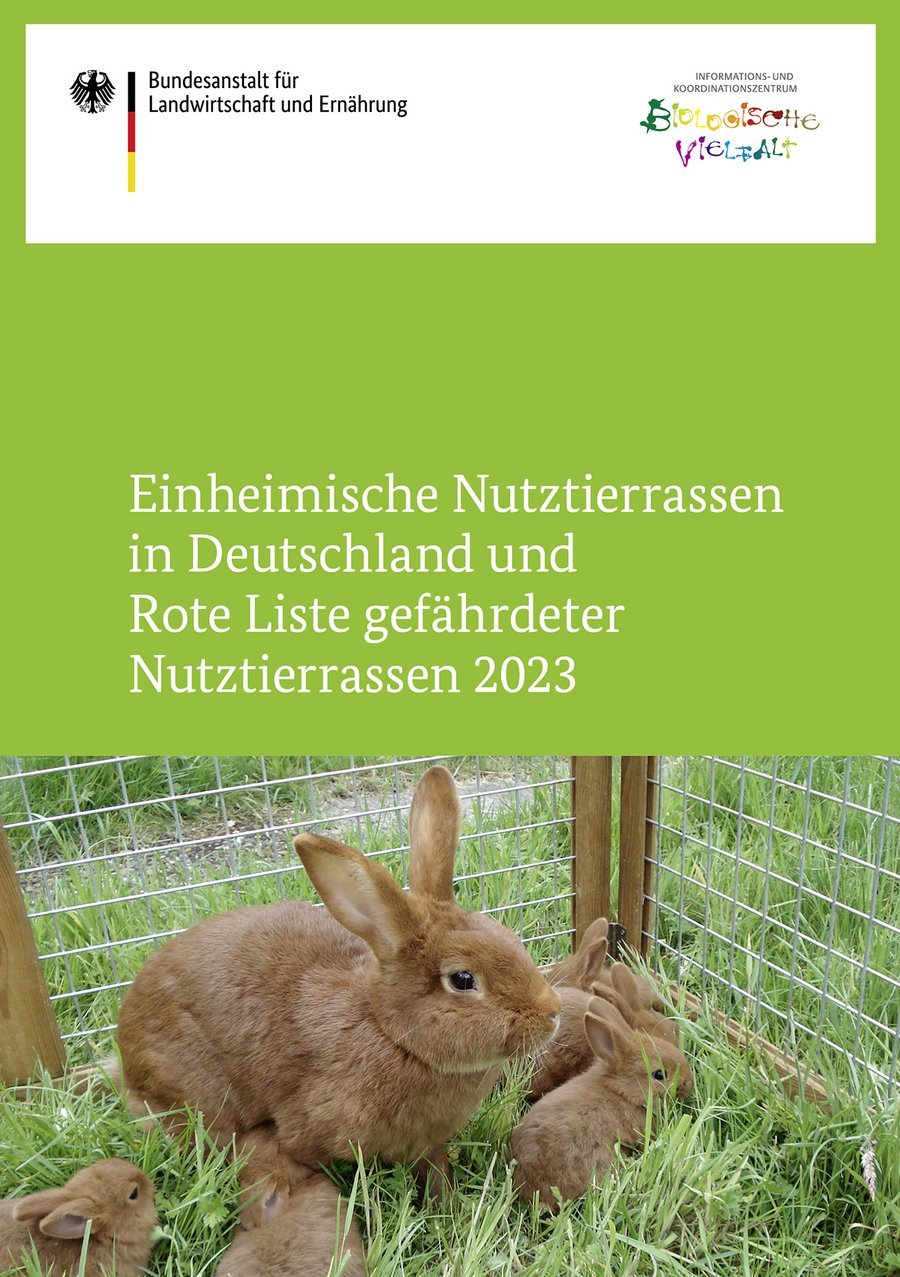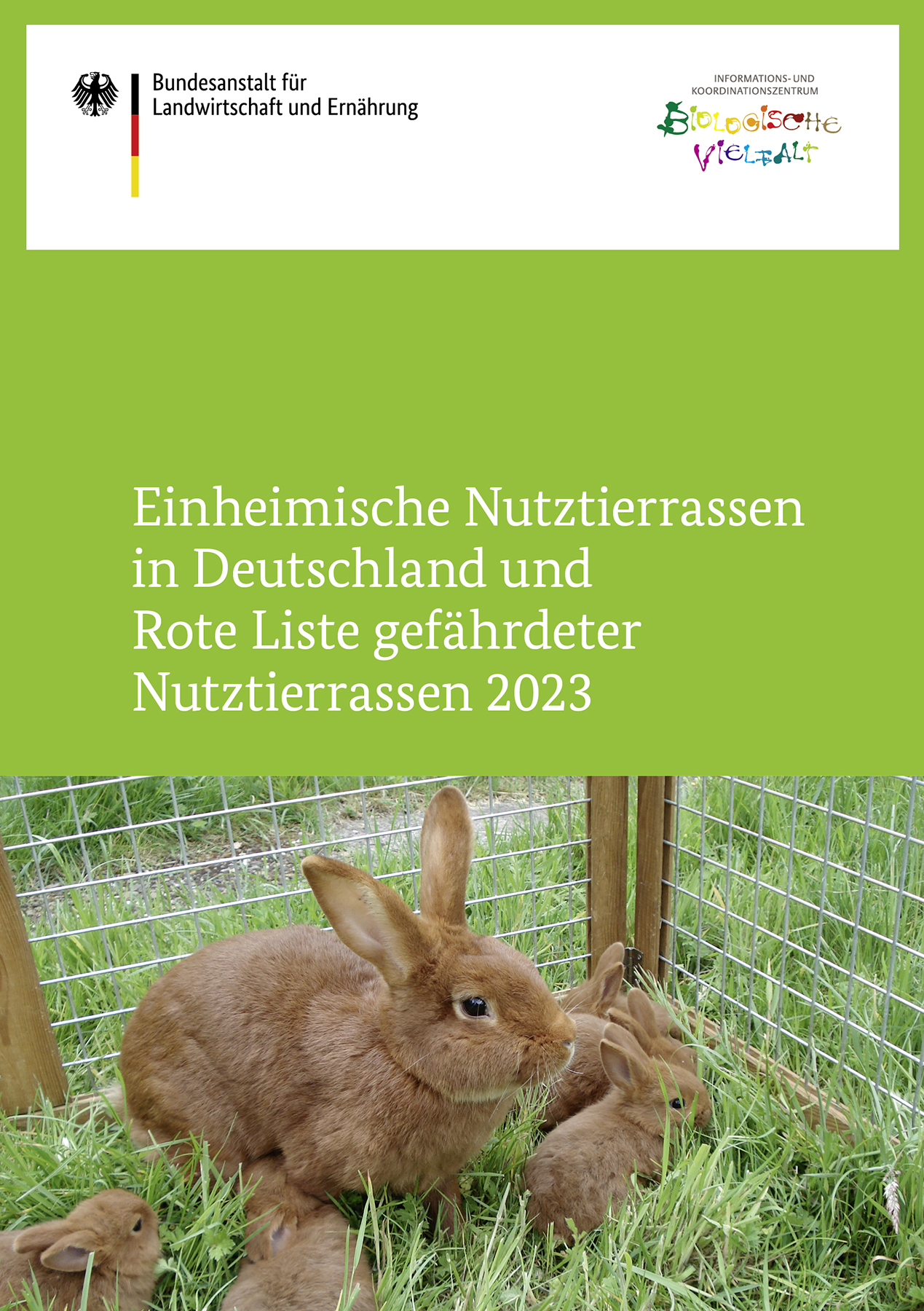According to the national animal breeding law (§2 TierZG), an indigenous livestock breed is:
a) a breed for which a herdbook was first established on the basis of livestock available in Germany and which has been kept in Germany since then or, if the establishment dates back further, since 1949, or
b) a breed for which a herdbook was not first established in Germany, but for which now only in Germany herdbook and breeding program are installed, or
c) a breed for which a herdbook was not first established in Germany, but for which on the basis of livestock available in Germany a herdbook is kept at least since 1949 and a separate breeding program is conducted.
Furthermore, the National Advisory Committee on Animal Genetic Resources recommended that certain populations between which there is a substantial exchange of breeding animals be grouped together into a breed group. This recommendation was also implemented in the risk assessment.
The classification of the indigenous livestock breeds of large animals is mainly based on the calculated effective population size (Ne). This is calculated from the herdbook figures published in TGRDEU using the following formula:
4 x number of male animals x number of female animals
Ne = -------------------------------------------------------------------------------------
(number of male animals x number of female animals)
However, in derogation of this a farm animal breed may also be classified in another risk category under special circumstances. In 2013, on the recommendation of the National Advisory Committee on Animal Genetic Resources, the classification into risk categories was revised. This concerns mainly all the deviations from the mathematically estimated endangerment of a farm animal breed. In the interests of improved transparency, reasons have been defined which may justify a deviation. There are four risk categories:
Not endangered (NG):
- Effective population size: over 1,000
- Possible deviations: If Ne is in favour of a higher risk category, the classification in NG can be provided for, if the new or synthetic breed is not consolidated for breeding purposes and can be reactivated at any time from existing initial breeds, the breed is not kept in an own stud book and the transfer to an own breeding bay is not intended, the creation of a cryoreserve is currently not necessary or the breed is so widespread worldwide that no risk is foreseeable.
- Measures: successful use in agriculture, no conservation measures required, monitoring
Observation population (BEO):
- Effective population size: between 200 and 1,000
- • Possible deviations: If Ne is in favour of a higher risk category, BEO classification may be provided for if the population is stable and an effective breeding programme is used to maintain genetic variance. If Ne is in favour of the risk category NG, a classification in BEO can be provided if only regional distribution of the breed, a problematic breeder structure or the dynamics of the population decline indicate a risk potential.
- Measures: Cryo-conservation of semen required, Monitoring
Conservation population (ERH):
- Effective population size: less than 200
- Possible deviations: If Ne is in favour of a lower risk category, the classification in ERH can be provided for if only local distribution of the breed, a very problematic breeder structure or the dynamics of the population decline indicate a significant risk potential.
- Measures: Cryo-conservation of semen and conservation breeding programs required, Monitoring
Phenotypic conservation population (PERH):
- Breeds of national cultural importance in which the animal population cannot be genealogically clearly traced back to the original breed, the breed was already strongly mixed with other breeds when it was re-established, or had only gone back to very few animals, or the breed had only very small populations over several generations.
- From a zoo-technical point of view, these breeds can only be understood as rudiments. Monitoring is carried out.


